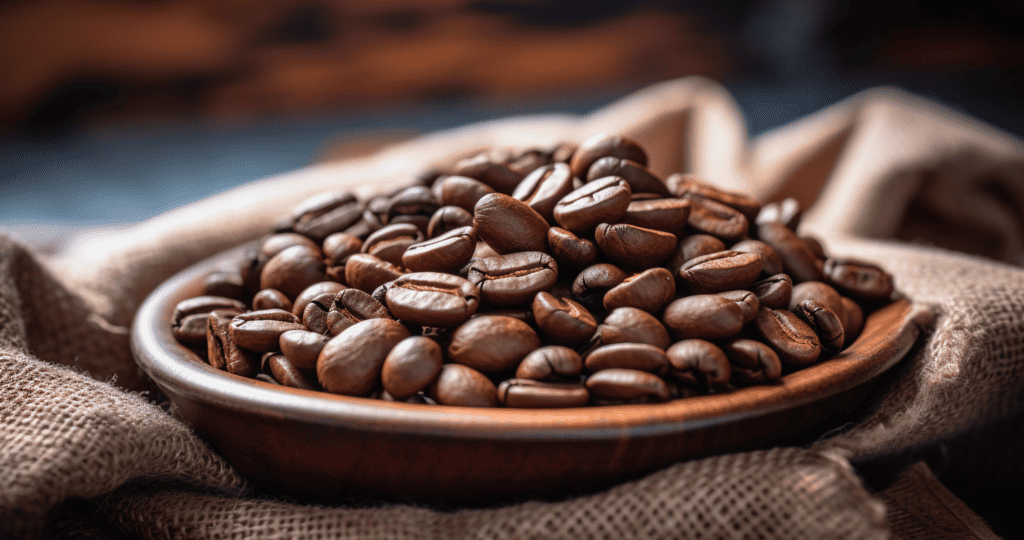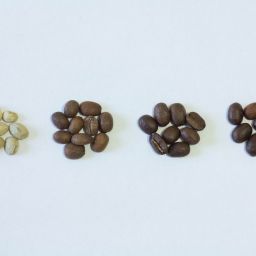
Choosing the right coffee beans for your espresso machine is crucial for crafting the perfect cup of espresso. The beans not only determine the flavor, aroma, and body of your espresso but also influence the crema and the overall experience. With a variety of beans available on the market, understanding the differences and knowing what to look for can significantly enhance your espresso-making process and enjoyment.
Types of Coffee Beans: Arabica vs. Robusta
- Arabica: Known for its smooth, complex flavor profiles, Arabica beans are preferred for high-quality espresso blends. They tend to have a higher acidity and a more nuanced array of flavors compared to Robusta beans.
- Robusta: Robusta beans are valued for their strong, robust flavor and higher caffeine content. They often exhibit a more bitter profile, which can add depth and intensity to espresso, making them a popular choice for blends.
Roast Types: Light, Medium, Dark
- Light Roasts: Preserve the original flavors of the bean, offering a higher acidity and fruitier notes. They are less common for espresso due to their subtle flavors.
- Medium Roasts: Provide a balanced flavor, acidity, and body, making them versatile for various coffee brewing methods, including espresso.
- Dark Roasts: Characterized by a stronger, bolder flavor with reduced acidity. Dark roasts are traditionally preferred for espresso due to their rich, caramelized flavors that stand up well to the intense espresso brewing process.
Freshness and Roasting
The freshness and roasting of coffee beans significantly impact their flavor and aroma. Freshly roasted beans, usually within a month of roasting, offer the best taste and aroma, emphasizing the importance of using them for making espresso. The roasting process itself unlocks the beans’ flavors and aromas, with the roast level tailored to enhance specific characteristics of the beans.
Bean Origin and Its Impact
The origin of coffee beans plays a crucial role in defining the flavor profile of your espresso. Beans from different regions exhibit unique flavors influenced by the local climate, soil, and processing methods. For instance, Ethiopian beans might offer floral and fruity notes, while Brazilian beans could provide chocolatey and nutty flavors.
Roast Date and Freshness
Using freshly roasted beans is essential for a high-quality espresso shot. Beans should ideally be used within weeks of their roast date to ensure the freshest flavor and aroma. Fresh beans also produce a better crema and a more vibrant espresso shot.
Flavor Profile Preferences
Choosing beans for espresso also involves balancing between adventurous flavors and consistency. Some may prefer a consistent, traditional espresso flavor, opting for single-origin beans roasted to a dark level.
Others might seek out medium-dark roasts or blends that offer a mix of flavors for a more adventurous taste profile.
Selecting the right coffee beans for your espresso machine involves considering the type of beans, their roast level, freshness, and origin. By understanding these factors, you can enhance your espresso experience, tailoring it to your personal taste preferences and exploring the diverse world of coffee flavors.
Top Coffee Bean Recommendations
For those in pursuit of the perfect espresso, selecting the right coffee beans is paramount. Below are top picks that cater to a variety of taste preferences, each offering unique flavors and qualities suited for espresso enthusiasts.
Mountain Roast 10% Kona Blend
This blend offers a smooth taste and a balanced body, making it versatile for both hot and iced espresso drinks. With 10% Kona coffee, it combines the high standards of Kona cultivation with a unique flavor profile from volcanic soil.
Lavazza Cream and Aroma
Known for its fruity and floral notes, Lavazza Cream and Aroma provides a rich and aromatic espresso experience. This blend is ideal for those who appreciate a complex flavor profile in their espresso.
JO ESPRESSO
Featuring a sweetness accompanied by a dark chocolate hum, JO ESPRESSO boasts an excellent crema. It’s a choice blend for those looking for a rich aromatic espresso with a velvety finish.
Volcanica Ethiopia Yirgacheffe
This single-origin coffee from the Yirgacheffe region is celebrated for its notes of strawberry, lavender, and guava, offering a bright and fruity espresso shot. It’s a medium roast that preserves the unique flavors and acidity.
Kona Coffee Peaberry
Made from 100% Kona peaberry beans, this coffee offers a smooth, powerful taste. Despite its dark roast, it’s not bitter, presenting a rich crema and delicious espresso suitable for various brewing methods.
Volcanica Jamaican Blue Mountain
As a premium choice, this coffee delivers a full flavor and balanced taste with prominent fruit notes and light acidity. Cultivated in the Blue Mountains of Jamaica, it’s recognized among the world’s finest coffees.
SF Bay Coffee Fog Chaser
This medium-dark roast is known for its milk chocolate, toffee, and mandarin notes. Sustainably grown, these beans are packed in airtight packaging to maintain smooth flavors.
Kicking Horse Coffee, Cliff Hanger Espresso
A medium roast with chocolate tones, this organic coffee provides a bold flavor. It’s a climate pledge-friendly choice, offering a fresh flavor profile with notes of milk chocolate, blackcurrant, and brown sugar.
Peet’s Arabian Mocha Sanani
With distinctive cocoa and dark chocolate notes, this coffee offers a unique taste profile. Made with 100% Arabica beans from Africa and Arabia, it’s a standard option for those seeking a distinctive espresso experience.
Volcanica Espresso Dark Roast Coffee
This blend offers a caramel-like sweetness with light acidity. Comprising Central and South American beans, it’s an absolute treat for the senses, providing a delicious balance and a complex spicy aroma.
FAQs
What is the best roast level for espresso? The best roast level for espresso often comes down to personal preference; however, dark roasts are traditionally preferred for their rich, caramelized flavors that complement the intense brewing process.
Can I use any coffee beans for espresso? While you can technically use any coffee beans for espresso, beans that are freshly roasted and have a flavor profile suited to the espresso brewing method will yield the best results.
How do I store espresso beans to maintain freshness? Espresso beans should be stored in an airtight container away from direct sunlight and heat to maintain their freshness. It’s best to use them within a few weeks of the roast date for optimal flavor.
Each of these coffee beans offers something unique for the espresso aficionado, from smooth, balanced blends to rich, aromatic profiles. Whether you prefer a traditional dark roast or something more adventurous, the perfect espresso bean is out there waiting to be discovered.
FAQs
What is the best roast level for espresso? The ideal roast level for espresso is generally a dark roast, as it offers rich, caramelized flavors that can withstand the high-pressure brewing process of espresso machines. However, preference varies, and some may enjoy the nuanced flavors of a medium roast.
Can I use any coffee beans for espresso? Yes, any coffee bean can technically be used to make espresso. However, the choice of bean affects the flavor, aroma, and overall quality of the espresso. Beans specifically roasted for espresso tend to yield the best results.
How do I store espresso beans to maintain freshness? To maintain the freshness of espresso beans, store them in an airtight container at room temperature, away from direct sunlight and moisture. It’s best to consume them within a few weeks of their roast date to enjoy their optimal flavor.
Conclusion
Selecting the right coffee beans is crucial for achieving the perfect espresso. This guide has highlighted top recommendations and key factors to consider, such as the type of beans, roast level, and freshness.
Whether you prefer a smooth Kona blend, the rich aromas of Lavazza, or the unique flavors of Ethiopian Yirgacheffe, the right choice depends on individual taste preferences.
Remember, the freshness of the beans and how they are stored can significantly impact the quality of your espresso. Experimenting with different beans and roast levels can lead to discovering your ideal espresso blend.









